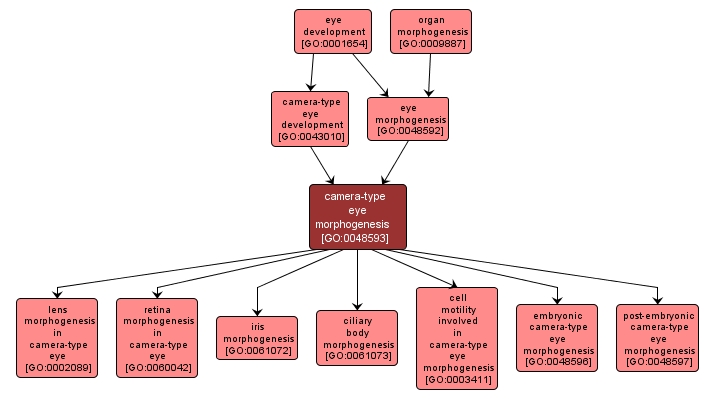| Desc: |
The process by which the anatomical structures of the eye are generated and organized. Morphogenesis pertains to the creation of form. The camera-type eye is an organ of sight that receives light through an aperture and focuses it through a lens, projecting it on a photoreceptor field. |














